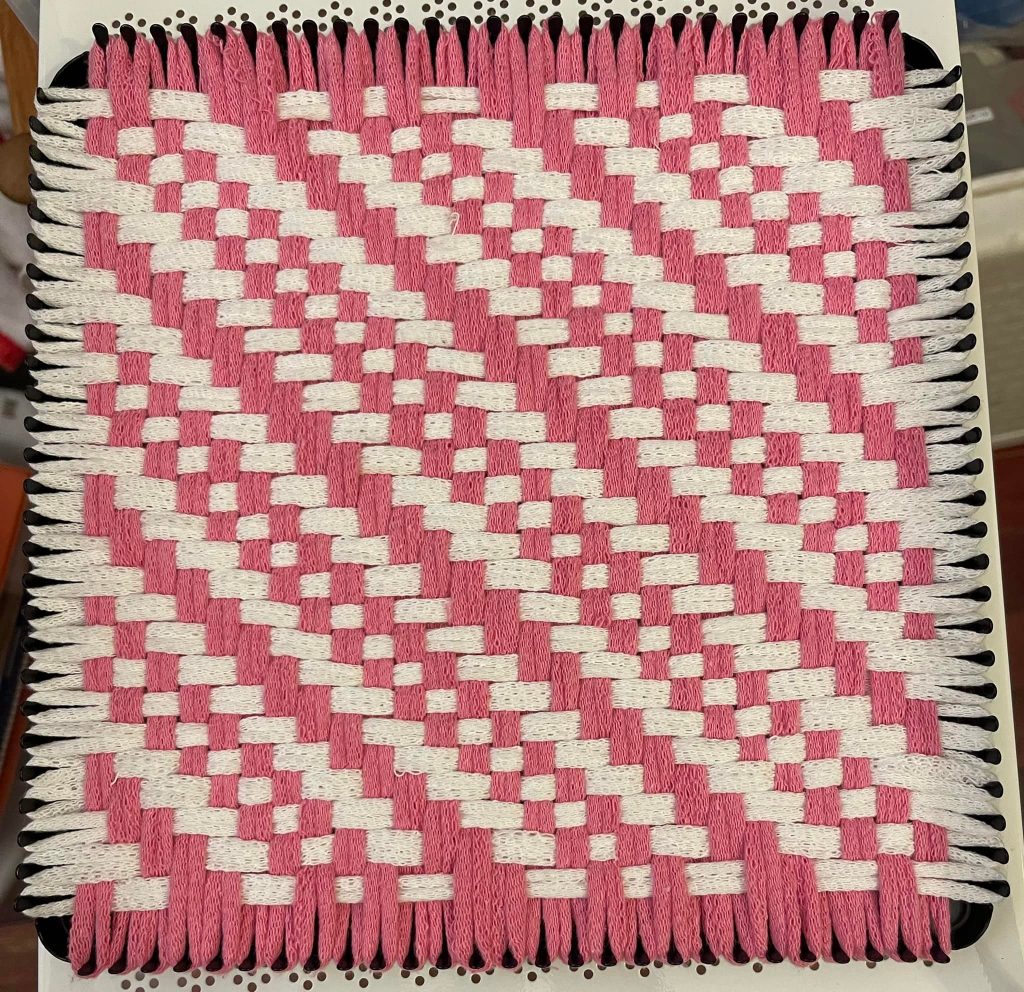Oh gosh, this traveling twill is pretty. And very well behaved. The fabric does not bias or twist easily. It folds in all directions, lies flat, and has distinct ridges of texture. The 18-peg version is the first 18 rows and columns of this 27-peg chart. (Both are available on our website, and will be incorporated in our book in the next release.)
The 9-peg version should also work up well, and I’d love to see it if anyone tries it. (Use the first 9 rows and columns of the pattern for the mug rug, on alternating pegs of a traditional 18-peg loom.)
The pattern is surprisingly easy to weave. Because it is in groups of 3, the over/under pattern does not shift: under 2 / over 2 / under 2 / over 1 / under 1 / under 1. Repeat across the row, shift one column to the left on the next row. Once you work a few rows, you can continue without referring to the chart.
If you start from the middle, you will find that each row after the center row is a mirror image of its pair on the other side of the center. If you weave a loop, then rotate your loom, you will work the same pattern on that row.
Matthew found the design in “An Album of Textile Designs” (1885) archived on handweaving dot net, and adapted it for potholders.


